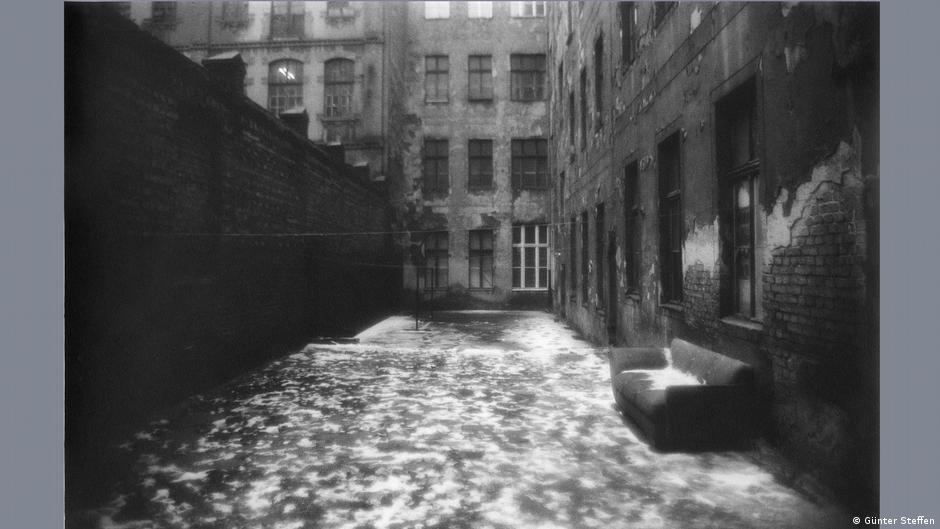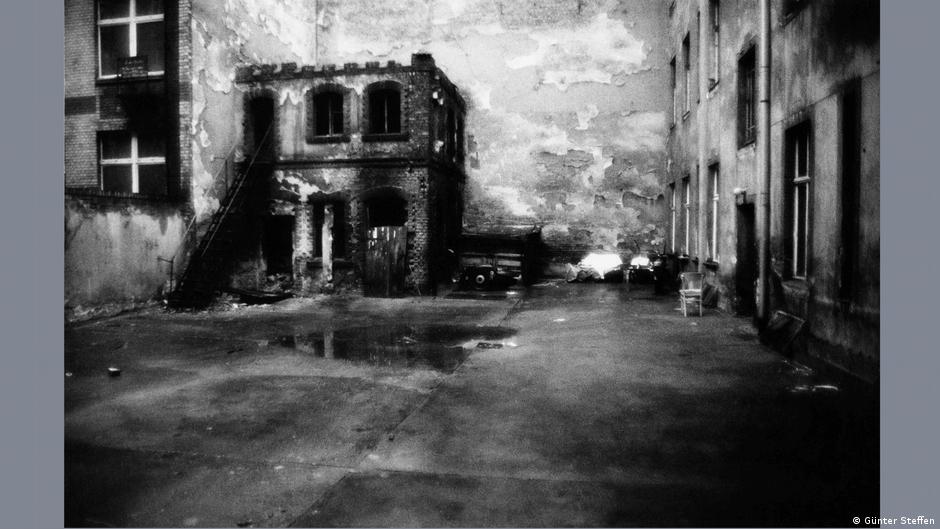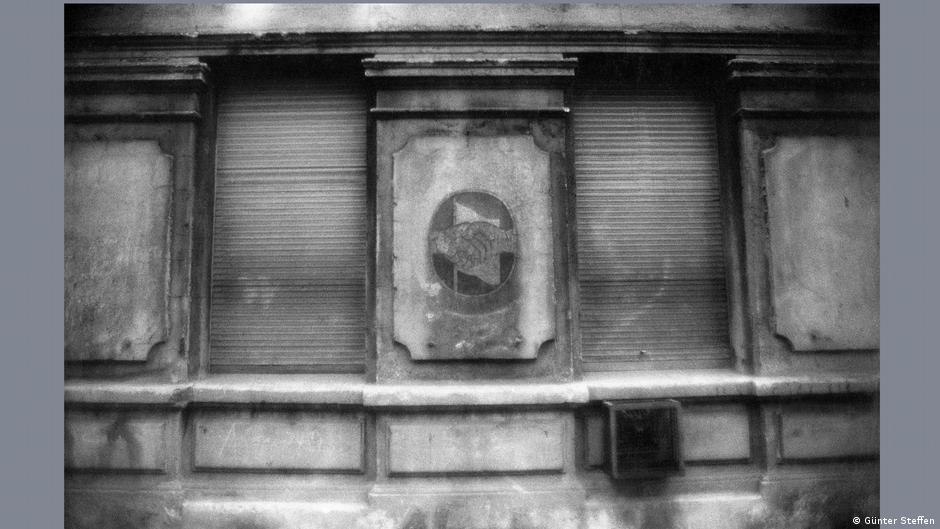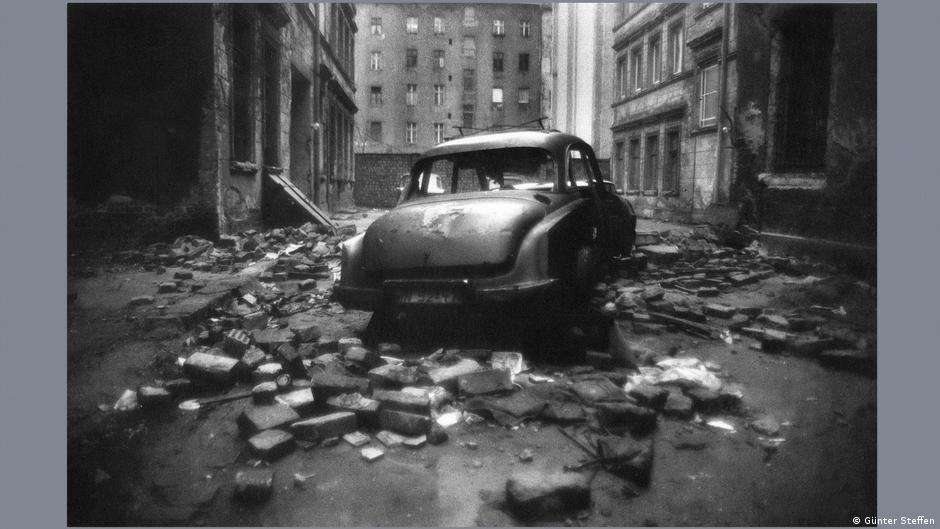East Berlin before the Wall fell: a photographer's perspective
Photographer Günter Steffen captured the final years of East Berlin under the GDR. The pictures reveal a decaying, abandoned city.
Crumbling facades, abandoned backyards, wrecked cars — Günter Steffen's photographs are an expression of hopelessness, brokenness, and sadness. The photographer paints a mood of the end of time that many felt back in the 1980s, including himself.
"I started the photo cycle in 1984. It was the year in which applications by GDR citizens to leave the country were more often approved by the authorities. In my circle of acquaintances there were also some who decided against the GDR. Many of them opted for a sham marriage [ Editor's note: with a person from the West, for the purpose of easier emigration] as a means of changing sides, and I also took photographs at these weddings. The city was getting emptier and emptier, that was my feeling. And so, the pictures show my inner mood at that time," recalls Steffen, now 80.

This view of an abandoned backyard is part of the exhibtion entitled 'The Capital - East Berlin in the Eighties'
The pictures were mostly taken in the wee hours of Sundays when the city was still deserted. It is a cycle of black-and-white photographs taken between 1984 and 1989.
He captured the public space with his Praktica camera — unintentionally achieving a very special photographic effect. Praktica was a brand of camera once manufactured by Pentacon in Dresden, in East Germany.
"I had bought a second-hand Japanese lens and thought I was on the safe side, but it was a non-branded product. It had a feature of creating a kind of veil over the images. An effect that makes the images appear even darker and more dystopian. "
Photos fit for the drawer
Günter Steffen grew up in East Berlin, studied physics, but then decided to take up photography.
But first Steffen had to submit an application that also included samples of his work and the names of two guarantors to the state's cultural commission, which met once a year. Without this state approval, he would not have been able to work freely.
Steffen then received a license. "If you were employed somewhere, then you were subject to state control. I wanted to lead a self-determined life," he explains.
Still, he wasn't all that free: the pictures from the photo cycle were not published until 30 years after the fall of the Berlin Wall. "When I took the pictures back then, it was clear to me from the start that they were for the drawer. Miraculously, they have now been given their proper purpose after all," the photographer says happily.
Even after the fall of the Wall, publishers initially did not want to publish his pictures; they could dampen the spirits of even the most upbeat viewers, the publishers told him. After all, the mood after the fall of the Wall was different — one of hope and the future, of joy and reunification.
Today, some 30 years later, the time is apparently ripe to exhibit these images. They can be viewed at an exhibition entitled "Die Hauptstadt — Ost-Berlin in den Achtzigern" (The Capital — East Berlin in the Eighties) that began on November 5 at the Berlin-based gallery, "argus fotokunst."
It is accompanied by a 160-page publication edited by Günter Jeschonnek, who is himself a witness of the GDR era.
The book shows pictures by Günter Steffen and at the same time focuses on an almost forgotten novel by the Russian writer, Yevgeny Zamyatin.
The dystopia of time
"The idea arose in my mind to combine Günter Steffen's pictures with a literary text that could lend these motifs another level of meaning. The texts, however, were not to interpret the pictures, but to establish a relationship of tension. Remembering my preoccupation with Russian literature, I again came across Yevgeny Zamyatin and suggested texts from the novel 'We' to Steffen," Günter Jeschonnek wrote in his foreword.
This novel was on the list of banned books in the Soviet Union for almost 70 years.
It was not until 1988 that the then-General Secretary of the Communist Party of the Soviet Union, Mikhail Gorbachev, approved the book's publication in Russian. It is a 1920 dystopian novel that must have inspired George Orwell's classic "1984," because the parallels are obvious.
"We" depicts a totalitarian social system that emerged after a 200-year war and the "very last revolution." This state, called the "benefactor," is "protected" by a wall, while the walls of the houses are made of glass, and it is the collective rather than the individual that matters. Armies of "protectors" watch over the "welfare" of the inhabitants, who are not referred to by their names, but as "numbers." Anyone who opposes the "benefactor" is publicly executed. The novel describes the events in the form of a diary of D-503, who constructs a spaceship to conquer space and export the achievements of the "last revolution."
Excerpts from "We"
[...] at the last moment I will piously and gratefully cover the punishing hand of the benefactor with kisses. I have this right towards the unified state — to accept the punishment, and this right I never cede. None of us numbers may and will dare to renounce this their only — and therefore all the more precious — right.
I have forgiven everything. Collision of trains. But it is not your fault — you are sick. The name of this disease is imagination. It — is the worm that eats black welts in the forehead. It — is the fever that drives you further and further to the race — even if this "further" would begin where happiness ends. She — is the last barricade on the way to happiness. Rejoice therefore: it is blown up now.
Yevgeny Zamyatin was influenced to write this novel following the events of 1917, the end of tsarist rule and the seizure of power by the Bolsheviks led by Lenin.
Zamyatin was one of the most talented writers in Russia at the time. However, his critical novel drew the displeasure of the party leadership and he decided to leave the Soviet Union for Paris in 1931. Six years later, he died of a heart attack.
The exhibition "Die Hauptstadt - Ost-Berlin in den Achtzigern" (The Capital — East Berlin in the Eighties) featuring Günter Steffen's photographs is open to the public at the argus fotokunst gallery in Berlin until December 18, 2021. The accompanying publication with excerpts from "We" edited by Günter Jeschonnek has been published in German, English and Russian by Hartmann Books.
This article was translated from the German by Brenda Haas






No comments:
Post a Comment